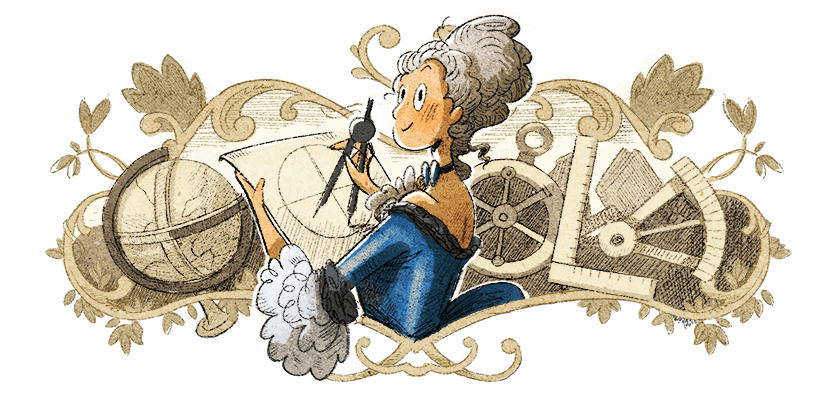Today’s Doodle honours Émilie du Châtelet, a French mathematician, physicist, translator, and philosopher who helped pave the way for modern physics with her contributions to Newtonian theory and goal to make scientific literature more accessible.
On this day in 1706, Émilie du Châtelet was born Gabrielle-Émilie Le Tonnelier de Breteuil in Paris, at a time when it was uncommon for women to pursue intellectual careers publicly. Châtelet, who was raised in an aristocratic family, absorbed a great deal from the eminent scientists and mathematicians whom her family frequently entertained. She supplemented her formal math and scientific studies with fencing and linguistics courses, and by the age of twelve, she had learned six languages. Despite society’s disapproval of women pursuing science careers, Châtelet defied the odds.
She married Marquis Florent-Claude du Châtelet, a distinguished military officer, while she was in her twenties, and their estate library included over 21,000 books! Châtelet submitted a revolutionary physics report to the French Academy of Sciences in 1737, predicting the existence of infrared radiation after months of secret investigation and experimentation. Voltaire, a prominent French enlightenment writer, recognised her abilities, and the two collaborated to publish “Elements of Newton’s Philosophy” under Voltaire’s name in 1738. For French readers, this groundbreaking book condensed down difficult Newtonian physics into simple words.
The anonymous publication of “The Foundations of Physics,” a work of natural philosophy that linked Newtonian physics with metaphysics, was Châtelet’s major achievement in 1740. Her work was crucial in the acceptance of Newtonian physics throughout Europe. Châtelet proceeded to change physics, albeit anonymously, by translating Newton’s manifesto for the laws of motion and gravity, “Principia.” It was published posthumously in 1759 and is still the most popular French translation today.
Here’s to an unstoppable force in the progression of physics!
- Google Doodle Celebrates King’s Day (Koningsdag) 2025 - April 26, 2025
- NCAA DIII Men’s Volleyball Championship 2025: Full Bracket, Schedule, and Scores - April 26, 2025
- NCAA DII Men’s Golf 2025: See the Complete List of Regional Selections - April 26, 2025





